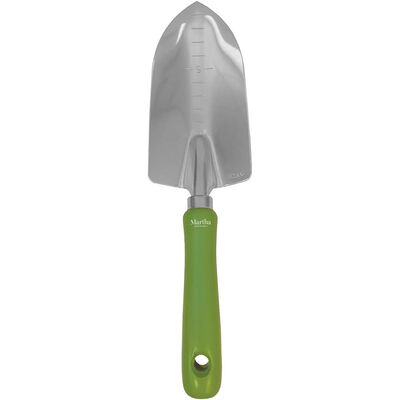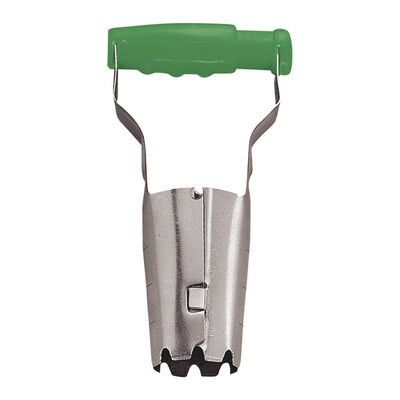
Start a Spring Flower Garden
Where to begin with your spring flower garden planning.
There is nothing quite like walking out your door to a kaleidoscope view of colorful flowers before you. As the winter fades and the weather begins to warm, spring planting may be starting to cross your mind. If you’ve decided to update your front or backyard landscaping with a beautiful spring flower garden this year, planning everything out before you get digging can help make the growing experience all the more enjoyable.
Assess Your Potential Plot
Although you may be itching to start planting right away, it’s important to first step back and take a look at the spot where you will be doing the digging. Whether you choose to grow in the ground or in containers, you’ll want to consider the light of the location. Does your spot contain a shadowed spot from a canopy of trees, or does it get soaked in sunlight daily with a full view of the sky? Take note of the lighting you’re working with, as this information will come in handy later on when you’re picking plants. Just as plants have varying watering needs, different types of flowers prefer different types of light.
You’ll also want to check in with the overall state of the soil in your space to ensure it is loose enough to work with and drains water well. If you’ve noticed that puddles have a tendency to show up after the rain, this could be a sign that your soil isn’t draining properly.

Choosing the Perfect Blooms
Colors:
A good place to start when you’re coming up with flower garden ideas, is to consider color. While some growers want their garden to showcase an explosion of different hues, others may prefer a more simplified color scheme. Either way, when you’re starting your research on the types of flowers you want, thinking about the basic color palette you want to stick to is a great way to begin the decision-making process.
Bloom Timing:
You also want to pay attention to a flower’s blooming period, as this will clue you into when and how long you can expect to see blossoms. It’s best to begin your planning with early-blooming varieties that will get the garden started in the spring, then add in other varieties that flower later in the growing season. Filling your garden with thoughtfully chosen flowers that have different bloom times ensures a beautiful display all the way into fall.
Knowing the blooming schedule is especially helpful for bulbs and bare roots, as this lets you know when they should be planted. Spring-blooming bulbs and bare roots need to be planted in the fall before the first frost, whereas fall bloomers should be planted after the final frost come spring. If you’re planning on planting bulbs or bare roots this spring, you’ll need to practice a bit of patience to see results, but the beautiful blooms make it all worth it, trust us.

Light Level:
Once you know the light level of your locations, you can use this to start to think about the types of flowers you’d like to include in your garden. Select shade-loving beauties, like bleeding hearts, for the shadowed sections of your landscaping, or find flowers that crave more sun, like ‘Mountain Frost Ruby Snow’ Dianthus, for the areas that receive full, frequent sun daily.
Design:
Just like you need to plan out your plants’ color scheme, it also works to your advantage to think about the overall design. If you’re working with a larger amount of space, consider mass planting for maximum impact or bringing in flowering shrubs or bushes to provide added dimension to your landscaping. With smaller gardening plots, cluster planting works best, but pay attention to how tall different plants will grow so you can plan accordingly in your design.
Zones:
When deciding on plant types, you’ll also want to take note of your area’s plant hardiness zone. Knowing this nugget of info becomes extra helpful if you’re planning on planting perennials in your flower garden. Your plant hardiness zone lets you know the level of cold conditions a plant can tolerate, clueing you into which perennial plants can survive the colder winter months where you live before they begin growing again in the spring.
For a full rundown of all things perennial plants, check out our complete guide to perennials.
What’s the Plan?
Before you get started planting, it’s helpful to take a moment to really plan everything out. A great first step in the planning process is updating your gardening supplies with a garden journal. Not only is a garden journal great for keeping track of all your plant-related info to reference later, it acts as the perfect place to lay out your plans for planting. Start by flipping to a blank page and sketching out a rough drawing of the plot where you will be planting. Before you start plugging in plants, you’ll want to find out your chosen flowers' recommended spacing to get a better idea of how far apart you should plant them.
If you’re planning on planting bulbs in your beds, get tips on spacing and more in our guide to how many bulbs you should buy.

Get Growing
After you’ve checked the frost dates in your area to see when is the best time to start, all that’s left to do is plant! Gather your gardening tools, and get a hold of your picked plants to prepare for planting. We recommend bringing home already-established starter plants, as beginning your growing journey with plants that are happy, healthy, and ready to grow is a great way to jump start your new garden’s growth.
What to Do If You Still Have Questions?
If you still have questions about how to best plan out your spring flower garden, we’re here to help. Chat live with a Greendigs team member on our website or shoot us an email at [email protected].


